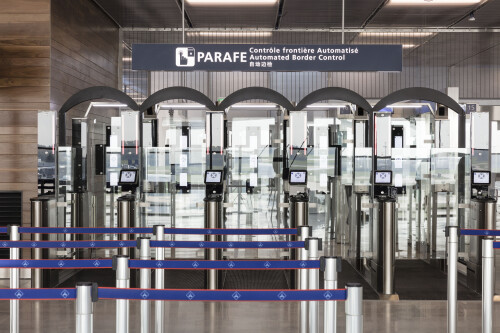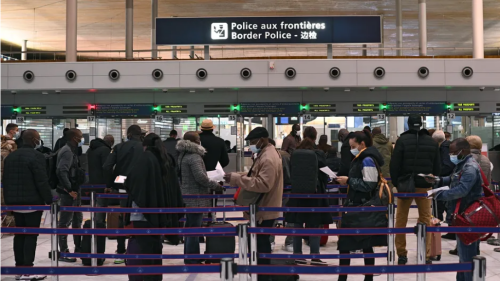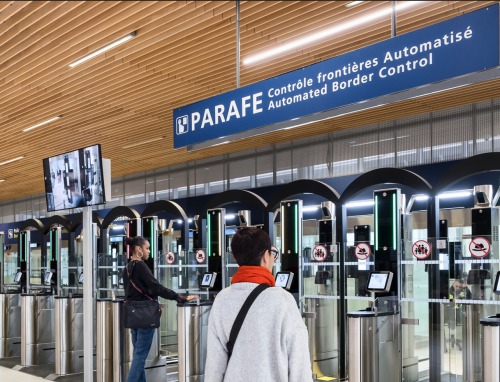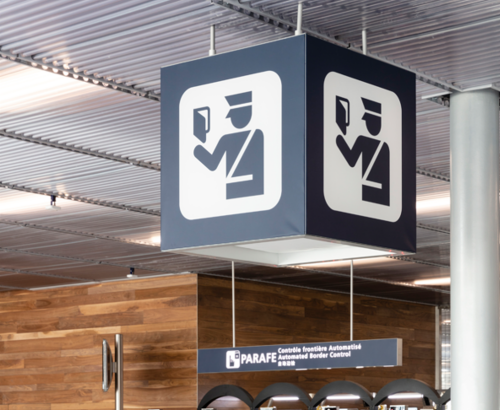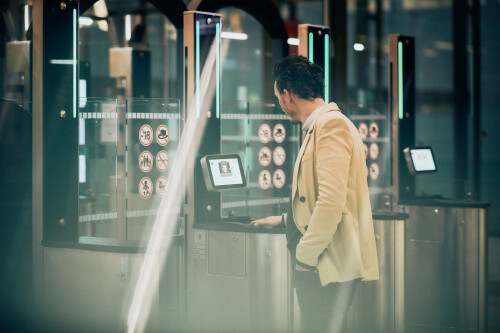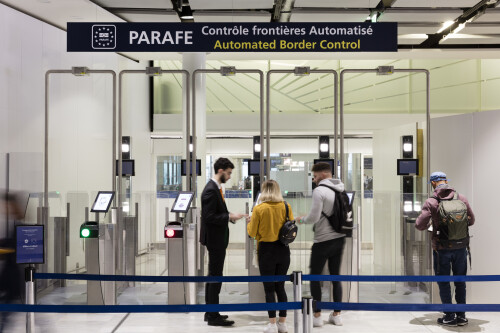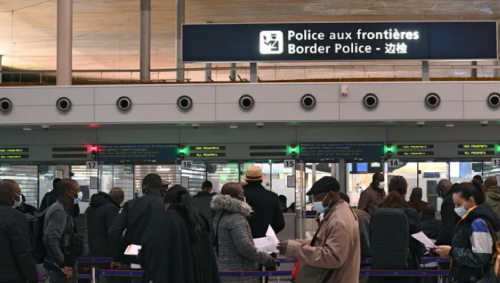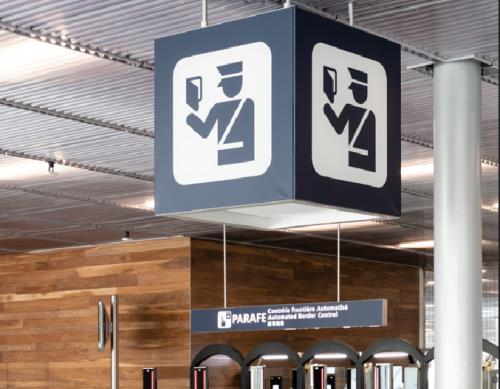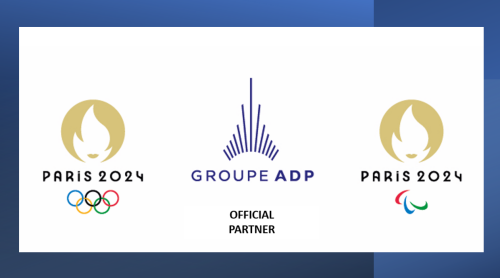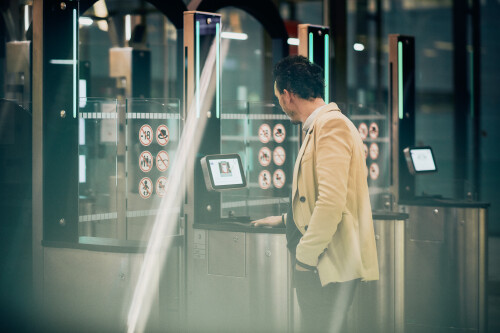- The Paris-Orly development project for 2035 is the precursor to the new airport development model led by Groupe ADP.
- It is part of the 2025 Pioneers roadmap to set out a new airport model in which airports become hubs for mobility and clean energy solutions, and are propelled into the future through denser existing infrastructures.
- The plan is for Paris-Orly 2035 to be a trailblazer and a regional accelerator, with fewer cars coming to the airport, greater comfort for passengers and employees, more low-carbon energy produced at the airport and no increase in the number of aircraft movements.
- The project will be presented as part of a voluntary public consultation, starting on 26 February and running for three months.
What is Paris-Orly 2035?
This involves envisioning what the airport, its infrastructure, its impact reduction and its integration into the surrounding area will be in 2035.
What it isn't…
A development project designed to accommodate more traffic.
Why is there a new development project now[1]?
As one of Europe's most urbanised airports, Paris-Orly needs to transform in order to:
- propel itself into a sustainable future in the areas where it operates
- accelerate its environmental transition, with an initial goal of zero net emissions on the ground from 2030
The arrival of metro line 14, which will connect the airport to the centre of Paris in 25 minutes, will completely overhaul access to the airport, providing an opportunity to promote public transport and reduce car use as much as possible.
Paris-Orly is already firmly committed to efficiency and reducing its impact, including through the Environmental Alliance, which brings together 40 partners from the airport community around five goals: zero net CO2 emissions on the ground by 2030; 30% of surface area dedicated to biodiversity; -6dB at the boundaries at night (10-11:30 p.m.); 40% reduction in electricity, heating and cooling consumption in the terminals by 2030; and 80% of non-hazardous waste recycled by 2030.
What are the traffic projections for 2035?
By 2035, we expect the number of movements to remain stable compared to 2018, at around 229,000 per year, with a moderate increase in the number of passengers handled of around 16% in 2035 compared to 2023.
Accommodating the moderate growth in passenger numbers, without additional movements, is made possible by the latest generation of larger aircraft and better aircraft load factors. The average passenger count per aircraft has already risen significantly in recent years, from 116 in 2020 to 158 in 2023.
What is the public consultation process?
Entering into dialogue with local areas is a priority for Groupe ADP, hence the decision to launch a voluntary consultation on this project in a wider scope of 104 municipalities and local authorities spread over four French departments. Meetings and workshops will be held in the municipalities closest to the airport (Athis-Mons, Chilly-Mazarin, Morangis, Orly, Paray-Vieille Poste, Rungis, Thiais, Villeneuve-le-Roi, Wissous, Ablon-sur-Seine and Draveil).
It will take place from 26 February to 26 May 2024. A consultation mechanism, structured into different phases of meetings and dialogue, will be rolled out :
- 1 dedicated website: parisorly2035.groupe-adp.com
- 2 opening and closing public meetings
- 6 thematic workshops
- 11 participatory "off-site" events
There are various ways for all parties to give their view:
- using the website parisorly2035.groupe-adp.com
- using the "paper" registers at each of the 104 town halls concerned
- using the stakeholder guide for professionals (website)
- by posting the coupon placed in letterboxes
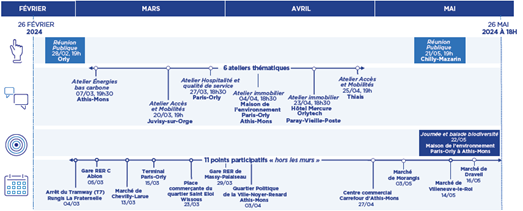
"Paris-Orly 2035 is the embodiment of the new airport model driven by Groupe ADP's commitment to the environment and quality of service. The first revolution will take place in June with the arrival of metro line 14 at the heart of the airport, heralding the total transformation of access to the airport. With Paris-Orly 2035, we are also unveiling a new ambition in low-carbon energy production and distribution," said Augustin de Romanet, Chairman & Chief Executive Officer of Groupe ADP.
"Paris-Orly is a pioneering airport serving our passengers and employees, as well as local residents. Our vision for the future factors in surrounding areas, as we look ahead together with our partners and the local community. Our ambition is to enable as many people as possible to benefit from the public transport solutions offered at the heart of Paris-Orly, develop low-carbon energies with our entire ecosystem, improve hospitality for all our passengers, particularly those with disabilities, and support real estate projects to enhance the attractiveness and vitality of the southern Paris region," added Justine Coutard, Managing Director of Paris-Orly Airport.
→ Learn more about the four pillars of the Paris-Orly 2035 project below.
1. Transform and decarbonise access: goal to reduce car use
Background:
- Recurring road congestion makes the journey to the airport more arduous and creates a great deal of uncertainty about journey times.
- Nearly 70% of passengers and 90% of employees travel by private car due to a lack of alternative public transport.
- Over 40% of the airport's CO2 emissions on the ground are currently linked to road access (source: ACA 2022).
Goals:
- Ease congestion by reducing car use and encouraging a modal shift to public transport, accelerated by the historic milestone of line 14 arriving in June.
- Offer passengers greater control over their time, thereby significantly improving quality of service.
The project:
- Introduce a dedicated public transport system at the airport to serve the terminals and facilitate access to the various areas of activity.
- Create four car parks and drop-off areas at the entrances to the airport, nearly a kilometre from the heart of the airport.
- Traffic and access rules will follow the guidelines below:
- Guaranteed access to the terminal: priority groups, such as people with disabilities and passengers with long-stay parking.
- A vehicle's green credentials: this will be a determining factor for whether access to the terminal is granted, depending on developments in the vehicle fleet.
- Taxis and private-hire vehicles: work will begin with representatives of these professions to define the rules for departing and arriving traffic.
→ We plan to double the percentage of passengers and quadruple the percentage of employees accessing the airport by public transport.
|
Paris-Orly: the Paris region's leading hub for mobility solutions 2024: arrival of line 14, at the heart of a station that will welcome 95,000 passengers a day, plus a higher-capacity bus station. |
2. Development of low-carbon energies: goal to decarbonise our operations and make them available to local areas
Background:
- The airport has a long-standing commitment to its energy transition and to preserving biodiversity: zero pesticides since 2015, geothermal energy production since 2010 (30% of the airport's heat) and the recovery of heat from the Rungis waste incinerator for over 20 years (35% of the airport's heat).
Goals:
- Accelerate the airport's transformation into an energy hub, enabling it to produce and distribute a range of low-carbon energy solutions, decarbonise airport operations and cater to the airport's neighbouring areas.
- Opening up to other regions is an opportunity to achieve economies of scale, based on shared energy needs.
Our projects:
Create new low-carbon energy production and distribution facilities :
- A multi-energy station: distribution of hydrogen, biofuel (HVO, produced from vegetable matter or waste) and provision of electric charging.
- A methanisation plant: using bio-waste from the airport, the Rungis market and ten neighbouring municipalities. This will help increase the proportion of clean energy in the airport's energy mix and provide heating to residents in the surrounding municipalities
- Commissioning of a second geothermal well.
- Areas set aside for the deployment of hydrogen, totalling around 20 hectares.
- Development of capacity and power generation.
- Deployment of solar panels at the airport.
|
Paris-Orly: a pioneering airport in biodiversity preservation The ambition of biodiversity preservation will be extended to neighbouring areas to consolidate the ecological corridors that run through the southern Paris region. - Sanctuaries created in 30% of areas dedicated to biodiversity. |
3. Improve quality of service: goal of greater comfort and accessibility
Background:
- Quality of service has improved continually over the last few years, with Paris-Orly ranked 39th in the world by Skytrax in 2023, following 46th place in 2022 and 76th in 2021.
- A critical point in the quality of the experience for all passengers, particularly people with disabilities, is boarding by bus rather than directly at the terminal.
- The rate of aircraft at contact stands, directly accessible via a boarding bridge walkway, is 88% overall at the airport, but falls to 56% for international flights operated at Orly 3.
The goal:
- Continue improving the quality of service provided to passengers and airlines, particularly for people with disabilities.
- Improve the boarding rate as close as possible to the terminal, by boarding bridge walkway, so that passengers do not have to take buses.
- Achieve 90% contact stands by 2035 throughout the airport and for all types of flight, without creating additional aircraft stands. This means better quality and more punctuality for passengers.
The project:
- Create a new boarding lounge, connected to Orly 2, enabling six bus-boarding stands to be converted into six aircraft contact stands with a boarding bridge walkway. This will not incorporate border and security controls, its footprint will be kept to a minimum and the new sealed surfaces will be offset by the deconstruction of runway 1.
- Improvements to experiences and installation of equipment for people with disabilities:
- The new departure lounge will be fully accessible;
- A mechanisation plan will be drawn up for all other routes;
- To meet isolation needs, changing rooms and quiet rooms will be deployed throughout the airport.
4. Develop the real estate offering: priority placed on local needs
Background:
- The improvement in public transport services, with the arrival of line 14, is a major factor in the attractiveness of the Paris-Orly airport area.
- The airport has significant land reserves of at least 80 hectares, excluding land that could be converted as part of the development project.
The goal:
- Rethink the use of the airport's land reserves to ensure they create jobs and economic vitality, complementing what the southern Paris region offers.
- Attract high value-added companies that create jobs, e.g. through the relocation of research and development activities.
The project:
- Deploy a range of services geared to the needs of local areas, using consultation to provide food for thought and proposals from the general public, project developers and local areas.
|
Paris-Orly: an ongoing commitment to reducing noise pollution Activities at Paris-Orly airport are already regulated (a limit of 250,000 movements per year and a curfew from 11:30 p.m. to 6:00 a.m.) and Groupe ADP has undertaken several initiatives in this area: The noise issue is currently being examined as part of the impact study using a balanced approach, led by the Val de Marne prefecture. |
[1] The project presented, which will be subject to voluntary consultation led by Groupe ADP, remains subject to change.









